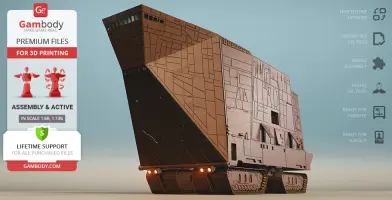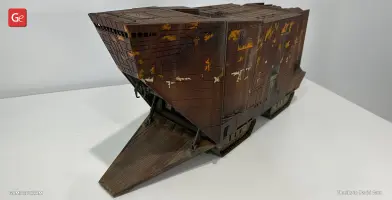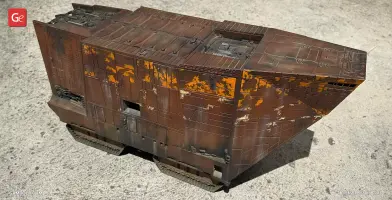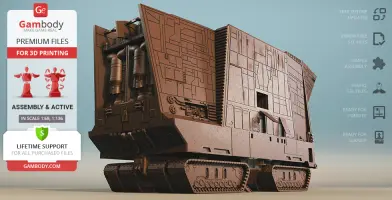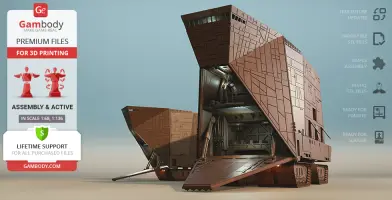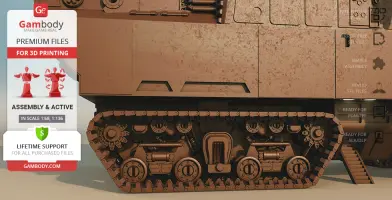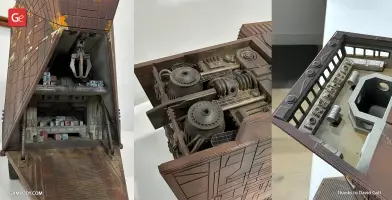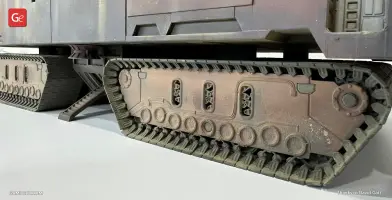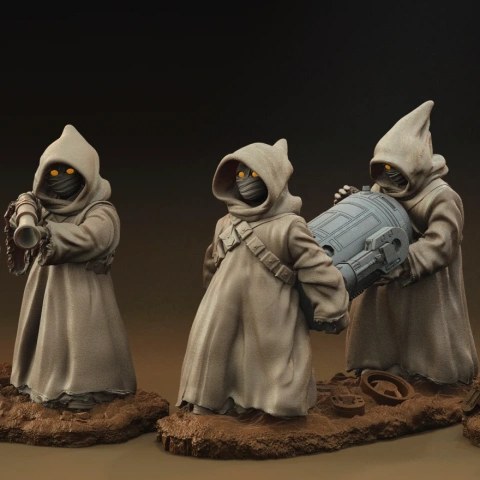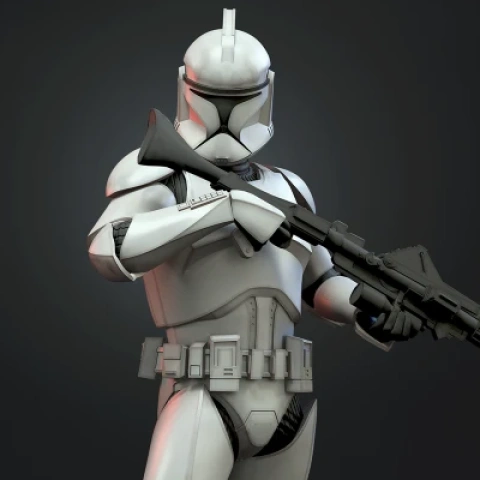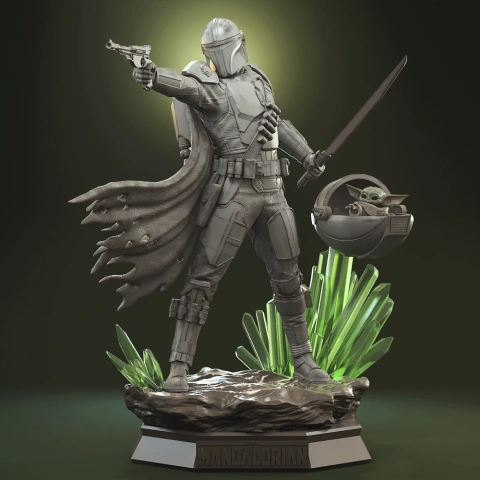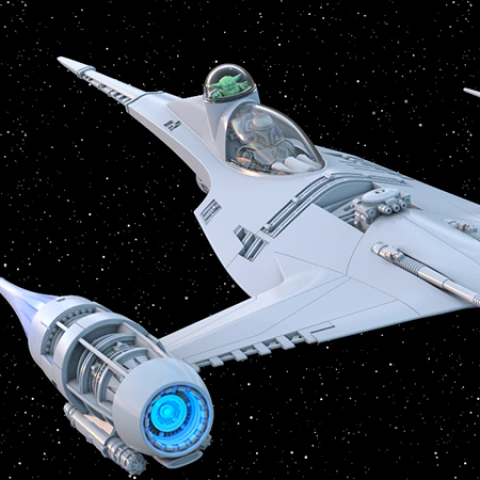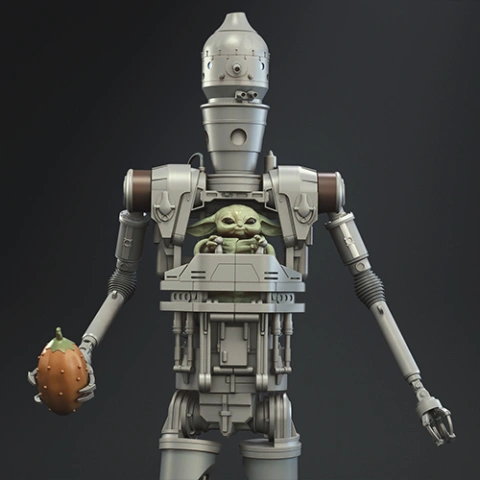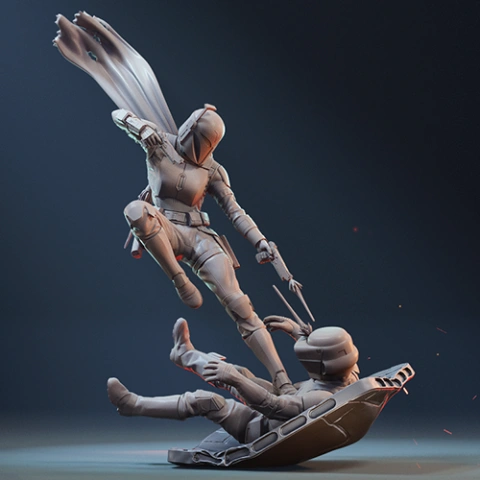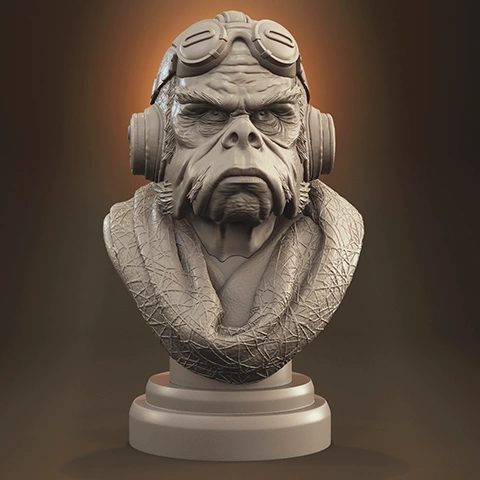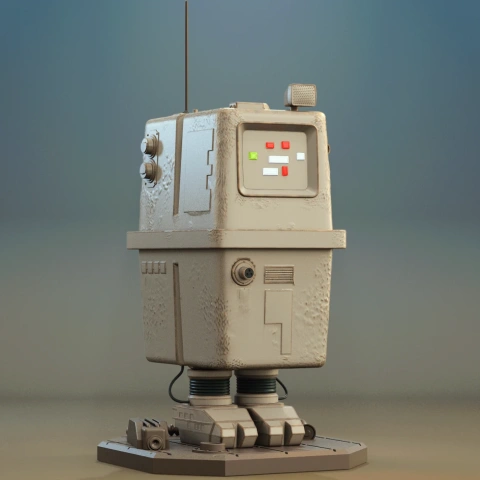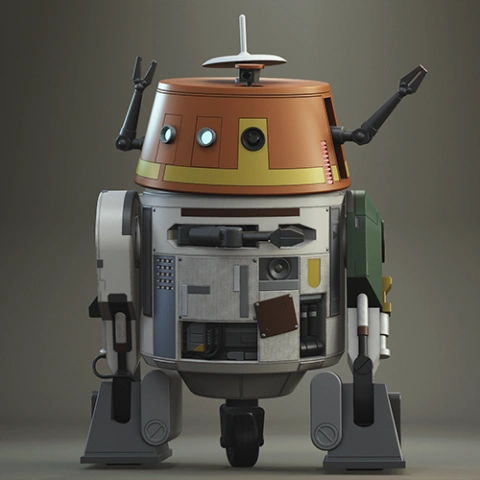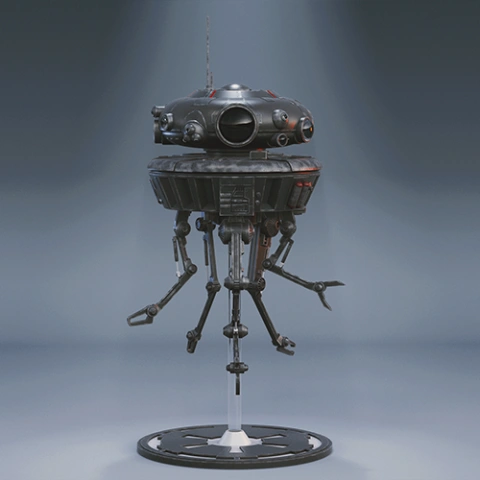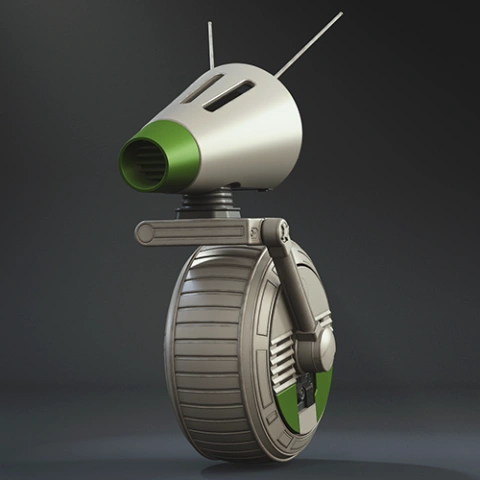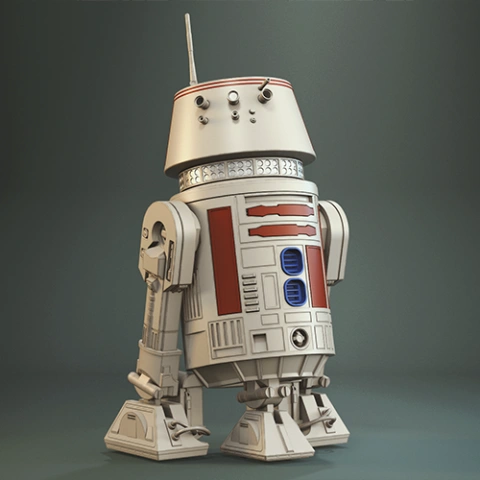Files
3D model format
Stereolithography (.stl)
Total files
Slicer settings
not available
Mesh error check
not specified
Support
Lifetime support from Gambody team
Update requests
not specified
Model versions
FFF/FDM
Assembly method
not specified
Features
DLP/SLA
Assembly method
not specified
Features
Additional details
Part of diorama
No
Special pack included
No
You will get instant access to the STL files of Sandcrawler 3D Printing Model | Assembly + Active after completing your purchase. Simply add the model to your cart and check out using PayPal, credit or debit card, Apple Pay, Google Pay, Alipay, or other available payment methods.
Watch the assembly video for Sandcrawler 3D Printing Model | Assembly + Active, and explore more tutorials, behind-the-scenes content, 3D printing timelapses, and painting guides on the official Gambody YouTube channel.
This 3D model of Sandcrawler inspired by the Star Wars universe consists of files in StereoLithography (.Stl) format that is optimized for 3D printing.
Before printing the files, we strongly recommend reading the PRINTING DETAILS section.
WHAT WILL YOU GET AFTER PURCHASE?
- 2 versions of the Digger Crawler STL files for FFF/FDM, DLP/SLA 3D printers - files for each version are available for download after the purchase
- STL files of high-poly Sandcrawler 3D Model for 3D printing that consist of 149parts
- Sizes:
FFF/FDM: 284 mm tall, 202 mm wide, 593 mm deep
DLP/SLA: 142 mm tall, 101 mm wide, 297 mm deep
- Assembly Manual for FFF/FDM and DLP/SLA versions in PDF format
- Detailed settings that we provide as a recommendation for Cura, Simplify3D and Slic3r for the best print
- Full technical support from the Gambody Support Team
Detailed information about this 3D printing figurine is available in the DESCRIPTION section.
Before printing, take a look at Printing Details for recommended settings and tips to achieve better results.
ABOUT THIS 3D MODEL
Bulky, old, rusty Sandcrawler from the Star Wars franchise surprises the majority of fans with its unusual, cosmic geometry and 6-storey building height. The fictional tank-like vehicle was used by Jawas, the furry humanoids from the desert planet Tatooine, as their transport and home. These mobile fortresses can survive the most extreme environments and have a special magnetic tube for sucking droids and scraping into the special chambers.
The Sandcrawler 3D printing model, designed by our contributing 3D artist, will undoubtedly blow your mind! Apart from the 3D artist’s accurate and remarkably authentic design, you can enjoy the numerous active mechanisms introduced by Gambody Team. The vehicle has several characteristics that make us feel so excited about it. Highly authentic active suspension with movable wheels will guarantee the mobility of the transport. To access the cockpit you have a removable panel. The large ramp can be opened by pulling the levers in the cockpit. Behind the ramp, there is an active salvage crane, attached with a string that allows height regulation of the system. Advanced users have the option to install the engine in the hidden rear compartment. You can even attach the stairs to the opening gantry! A piece of art that you can purchase and start printing right now!
ADAPTATION FOR 3D PRINTING
Sandcrawler for 3D printing is an active assembly model and its moderation and adaptation for different types of 3D printers took the Gambody team 50 hours in total. Various active mechanisms were introduced, and an authentic active suspension for all treads was worked out.
For you to receive the cleanest 3D printing result possible and minimize the amount of filament needed for generated support, the Sandcrawler was divided into convenient assembly parts.
All assembly parts in the FFF/FDM 1.0 version are provided in STL files in recommended positions that were worked out in order to ensure the smoothness of the details’ surfaces after printing and that the 3D printing beginners won't face difficulties when placing the parts on a build plate. After downloading any model's file you will also receive "Assembly Manual" for FFF/FDM 1.0 and DLP/SLA 1.0 versions in PDF format. We highly recommend that you get acquainted with the “Assembly video” and "Assembly Manual" before getting down to the Sandcrawler model.
The model is saved in STL files, a format supported by most 3D printers. All STL files for 3D printing have been checked in Netfabb and no errors were shown.
The model’s scale was calculated from the length of the Sandcrawler - 40 000 mm. The 3D printing model’s chosen scales are 1/68 for the FFF/FDM version and 1/136 for the DLP/SLA version.
VERSIONS' SPECIFICATIONS
FFF/FDM 1.0 version features:
- Contains 80 parts;
- The printed model is 284 mm tall, 202 mm wide, 593 mm deep;
- Opening power cells;
- Highly detailed cockpitinterior;
- Removable panel to accessthe cockpit;
- You can attach the stairs to the openinggantry;
- Opening ramp with hydraulicextenders;
- The ramp can be closed shut using twolocks;
- To open the locked ramp, pull the levers inside the cockpit;
- Highly detailed cargobay;
- Active salvagecrane attached with a string;
- You can install DVD holders inside the model to store your collection;
- Highly authentic activesuspension;
- Three tread system options: solidstatic treads, simpleactive treads with a two-piece conveyor, complextreads with a segmented conveyor for more experienced hobbyists;
- Hidden rear compartment to install an engine (for advanced users);
- You can light up the headlights, cockpit, cargobay, underlights, centralcompartment, etc.; the battery can be stored in the hiddencompartment behind the cockpit;
- All parts are divided in such a way that you will print them with the smallest number of support structures.
DLP/SLA 1.0 version features:
- Contains 69 parts;
- The printed model is 142 mm tall, 101 mm wide, 297 mm deep;
- Simplifiedcutting for the optimal 3D printing process and easy assembly;
- Opening power cells;
- Highly detailed cockpitinterior;
- Removable panel to accessthe cockpit;
- You can attach the stairs to the openinggantry;
- Opening ramp with hydraulicextenders;
- The ramp can be closed shut using twolocks;
- To open the locked ramp, pull the levers inside the cockpit;
- Highly detailed cargobay;
- Active salvagecrane attached with a string;
- You can install DVD holders inside the model to store your collection;
- Highly authentic activesuspension;
- Twotread system options: solidstatic treads and complextreads with a segmented conveyor for more experienced hobbyists;
- Hidden rear compartment to install an engine (for advanced users);
- You can light up the headlights, cockpit, cargobay, underlights, centralcompartment, etc.; the battery can be stored in the hiddencompartment behind the cockpit;
- All parts are divided in such a way to fit the build plates and to ensure that support structures are generated where needed.
You can get the model of Sandcrawler for 3D Printing immediately after the purchase! Just click the green Buy button in the top-right corner of the model’s page. You can pay with PayPal or your credit card.
Watch the tutorial on how to assemble Sandcrawler 3D Printing Model on Gambody YouTube channel.
Also, you may like other Star Warsmodels for 3D Printing.
_______
FAQ:
Where can I print a model if I have no printer?
How to get started with 3D printing?
How to set up my 3D printer?
How to choose right 3D model print bed positioning?
How to paint printed figurine?
Average customer rating (6 reviews)
4.7
Ratings breakdown
Click a star rating to filter reviews
Overall experience
Level of detail in the model
4.7
Model cut quality and assembly guide
4.7
Clarity and accuracy of the model page
4.7
Level of detail in the model
5
Model cut quality and assembly guide
5
Clarity and accuracy of the model page
5
Level of detail in the model
4
Model cut quality and assembly guide
4
Clarity and accuracy of the model page
4
Level of detail in the model
4
Model cut quality and assembly guide
4
Clarity and accuracy of the model page
4
Level of detail in the model
5
Model cut quality and assembly guide
5
Clarity and accuracy of the model page
5
Level of detail in the model
5
Model cut quality and assembly guide
5
Clarity and accuracy of the model page
5
Level of detail in the model
5
Model cut quality and assembly guide
5
Clarity and accuracy of the model page
5
To avoid printing issues and achieve the best quality, we highly recommend applying the following settings:
Generic
Below you can find printing recommendations for Cura, Bambu Studio, Simplify3D, Slic3r and PrusaSlicer software.
Disclaimer: The following printing settings are a recommendation, not an obligation. The parameters can vary depending on the peculiarities of your 3D printer, the material you use, and especially the particular assembly part you are working with. Each part that any model comprises often needs preliminary review, and you are free to tweak the settings the way you find suitable.
Note:
You can scale up the model (downscaling for FFF/FDM 3D printers is not recommended!);
All connectors should be printed at 100% Infill.
Bambu Lab printing recommendations:
These basic 3D printing settings recommendations for beginners were tested in Bambu Studio 1.9.1. Test models were printed on the Bambu Lab A1, Bambu Lab A1 Mini, Creality Ender 3 S1, Anycubic Kobra 2, and Anycubic Vyper using PLA and PETG filaments.
To avoid printing problems, we recommend the following settings:download
Cura printing recommendations:
These are averaged settings which were tested in the Cura 5.2.1 slicer. Test models were printed on Anycubic Vyper, Creality Ender 3 Pro with PLA filament.
To avoid printing problems, we recommend the following settings:download
Simplify3D printing recommendations:
These are averaged settings which were tested in the Simplify3D 5.0.0 slicer. Test models were printed on Anycubic Vyper, FLSUN v400, Ender3 S1 with PLA filament.
To avoid printing problems, we recommend the following settings:download
Slic3r printing recommendations:
These basic 3D printing settings recommendations for beginners were tested in Slic3r 1.3.0 software. Test models were printed on Ultimaker 2, Creality Ender 3, Creality Cr-10S pro v2, Anycubic I3 Mega, Anycubic I3 MegaS, Anycubic Vyper with PLA and PetG filaments.
To avoid printing problems, we recommend the following settings:download
PrusaSlicer printing recommendations:
These basic 3D printing settings recommendations for beginners were tested in PrusaSlicer 2.3.1. Test models were printed on Ultimaker 2, Creality Ender 3, Creality Cr-10S pro v2, Anycubic I3 Mega, Anycubic I3 MegaS, Anycubic Vyper with PLA and PETG filaments.
To avoid printing problems, we recommend the following settings:download
